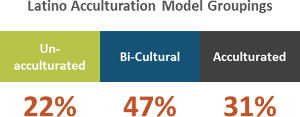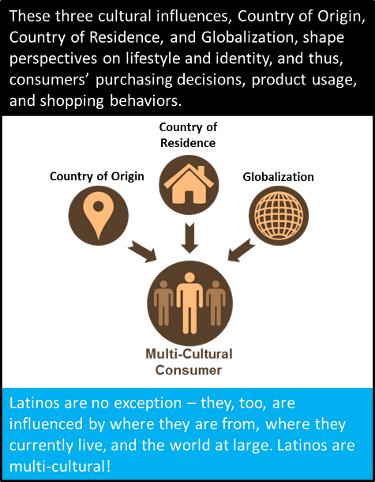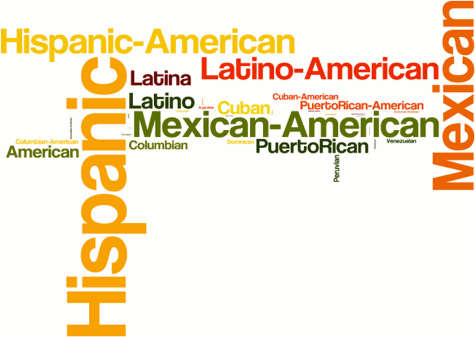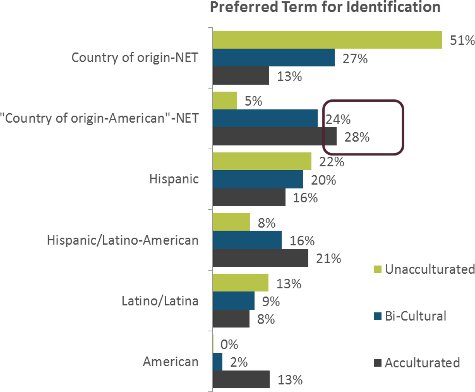Hispanic? Latino? Acculturation? Charting a course to understand today's multi-cultural latino consumer
America has always been a melting pot of cultures and its ethnically diverse marketplace a vital cradle for fresh opportunities. Energized with decades of U.S. Census Bureau data and projections, marketers, analysts, and strategists have increasingly looked to the Latino consumer as a source for short and long-term growth. And for good reason: According to U.S. Census Bureau Projections, there are 131 new-born Latinos every hour in America today. While we understand this sense of opportunity and optimism, we are also increasingly aware of the significant complexities that lie ahead for those wishing to serve this most diverse consumer base.
Without question, the greatest challenge facing those marketing to the Latino consumer stems from the tendency to generalize and simplify a demographic segment of the population. Throughout our years as social scientists and cultural anthropologists, we have noticed an insight into cultural and natural identity that applies to ALL people who live in America -- regardless of background: Americans cannot, nor should they, be defined by a single lens. Globalization, modern Americana, and tradition all play a role in creating personal identity, lifestyles, and interactions in any given context. Taken together, they create a multi-cultural consumer.
A large opportunity awaits those who chart a course for understanding the Latino culture
The Hispanic/Latino consumer is one of the most dynamic and rapidly growing consumer segments in the U.S., one that many marketers, manufacturers, and retailers are clamoring to reach. The Latino population in America itself is composed of a diversity of cultures, not one uniform demographic. It is a complex demographic segment to understand, one that does not identify itself as one group. So, with over 20 different countries of origin represented under the Latino umbrella (according to our research), a challenge exists: how to most effectively reach out to this broad and diverse audience?
There is another element we've observed over the years as well, one that our founder, Harvey Hartman, is quite fond of and never wants us to forget: "you have to have some fun; you get too serious and you often lose sight of the real message."
The animated cartoon allows us to show food culture in ways that the written word or actual video documentary do not. Think of it as the comma in your day. The pause. Take a moment, watch the cartoon. Hopefully, you'll smile, perhaps even laugh out loud, but still come away with the thought: "yes, that's how real life really is."
We want to entertain you with information, and, if we make you think a bit, that's okay, too.
The Appletons invite you to continue to follow their journey navigating the wonderful world of food culture. They'd love to hear from you, so please drop a note with any comments or suggestions. Cookie will get back to you.
Traditionally, acculturation has been the model used to explore the Latino culture in the U.S. Ethnic groups living in America have long been explored through acculturation. Acculturation has been, and still is, a very useful tool in understanding how individuals cross geographical and cultural boundaries; it's also an easy model for grouping Latinos — especially handy for marketing and governmental surveys.
The acculturation model used in The Multi-Cultural Latino Consumer, a new report by The Hartman Group and MSLGroup, is an algorithm that incorporates language spoken at home, overall cultural identification, media habits and years spent in the U.S. to determine where on the acculturation spectrum an individual falls. Based on this algorithm, we have determined the following groupings of Latinos:

While acculturation does not tell the whole story, a multi-cultural focus helps map the story in more detail. A multi-cultural point of view allows for:
- An appreciation of how Latinos are as much a part of the American fabric as any other consumer
- Greater perspective on each level of acculturation that goes beyond simple demographic considerations
- An understanding of how shifts in global culture affect individual consumers and that these shifts are reciprocal – all cultures give and take with one another
There are other dimensions of identity, in addition to acculturation, that form the basis for a "multi-cultural" perspective on consumer behavior. They include:
- Relationship to the Country of Origin
- Knowledge of their current residence (contemporary American culture)
- Degree to which they participate in the larger "global" culture

Who is the multi-cultural Latino consumer? How do they prefer to identify themselves? Although "Hispanic" is often used and seems like the favored form of self-identification, there are indications that this may not be the case moving forward. 
Most Latinos prefer to be identified by their Country of Origin; it is a source of pride and distinction. As the following chart illustrates, Country of Origin is the most desired way to be identified, but not always the most practical as preference varies by level of acculturation.  Q. What term do you prefer to be called the most? Source: The Multi-Cultural Latino Consumer 2013 report, The Hartman Group, Inc.
Q. What term do you prefer to be called the most? Source: The Multi-Cultural Latino Consumer 2013 report, The Hartman Group, Inc.
Even fully acculturated Latinos often want to maintain a connection to their Country of Origin through self-identification. Unacculturated consumers are most likely to use their Country of Origin to identify themselves (e.g., "I am Cuban"). As consumers become more acculturated, they identify more and more with America. However, Latinos rarely give up on their Country of Origin as a way to self-identify. When Country of Origin is not an option, "Latino" is the more all-encompassing term.
Our Multi-Cultural Latino report explores Latinos through the frameworks of acculturation and multi-cultural influences to determine key aspects of the multi-cultural Latino. Some of these characteristics include: a common language, growing equality between genders, a more relaxed family structure, an increased focus on the individual, a greater awareness of personal boundaries, an emphasis on education as well as hard work, and an awareness of physical well-being.
It is these shared differences that bring Latinos together. By identifying with other outsiders "like me," they have created their own sub-culture within the U.S. consumer market.
To learn more: The Multi-Cultural Latino Consumer report

